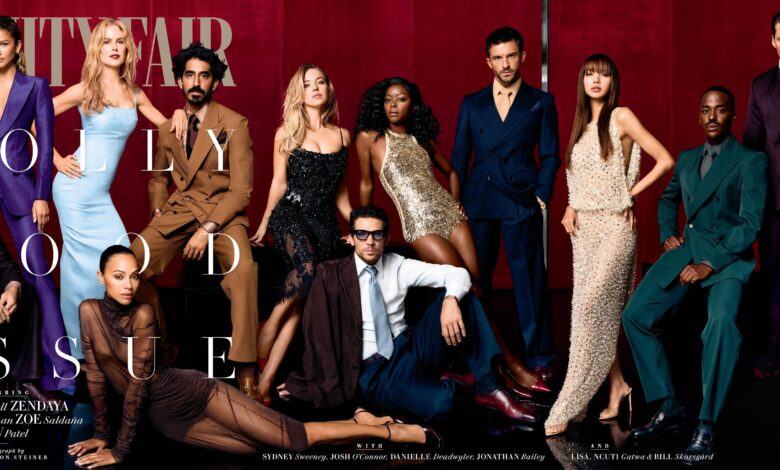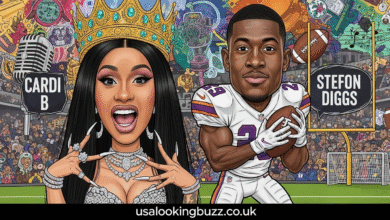Vanity Fair Cover: A Symbol of Culture and Glamour

The History of Vanity Fair Covers
Vanity Fair Cover made its debut in 1913, emerging as a publication that would eventually become synonymous with cultural sophistication and glamour. Initially, it began as a literary and social commentary magazine, but its evolution into a platform showcasing iconic cover designs was gradual and intentional. The early editions featured illustrations that captured the vibrant social scene of the time, blending fine art with insightful commentary. This approach quickly gained recognition, setting a precedent for future issues.
Over the years, the magazine’s cover designs reflected the changing tides of society and culture. In the 1920s, the covers became more experimental, utilizing bold colors and innovative typography that resonated with the Roaring Twenties’ sense of freedom and exuberance. Notable artists, such as Edward Steichen, played a pivotal role in this transformation, utilizing photography to capture the essence of glamour and sophistication. These artistic decisions not only defined the magazine’s visual identity but also established the Vanity Fair cover as an influential cultural artifact.
The generational shift in cover designs continued into the mid-20th century, as the magazine adapted to the demands of a changing audience. The 1960s and 70s heralded a new era, where photography became the primary medium, allowing for more personal storytelling through the featured personalities. Celebrities, fashion icons, and cultural disruptors graced the covers, and each issue served as a reflection of contemporary issues and trends.
As we move into the 21st century, Vanity Fair continues to innovate while maintaining its legacy. The covers increasingly embrace diverse representations, highlighting figures from various backgrounds and industries. This evolution in artistic vision not only captures the essence of modern glamour but also celebrates the rich tapestry of cultural narratives. The enduring appeal of the Vanity Fair cover lies not only in its aesthetic value but also in its ability to chronicle and reflect the significant moments in our social history.
The Iconic Photography and Design Elements
The cover of Vanity Fair is not merely a marketing tool; it is a meticulously crafted piece of art that has evolved over the years, shaped by pioneering photographers, skilled art directors, and creative stylists. Each element that contributes to a typical Vanity Fair cover is thoughtfully considered, enhancing the magazine’s reputation for glamour and cultural relevance. The photography style is often striking, characterized by dramatic lighting and bold compositions that capture the essence of the subject, whether they are a celebrity, political figure, or cultural icon.
Prominent photographers like Annie Leibovitz have played a pivotal role in establishing the unique visual identity of Vanity Fair. By combining artistic vision with technical expertise, these photographers create images that resonate emotionally with viewers. The aesthetics of a Vanity Fair cover often hinge on the interplay of light and shadow, drawing attention to the subject’s features while fostering a captivating narrative in a single frame.
Equally important are the design elements surrounding the photography. Art directors meticulously select color schemes that evoke specific feelings or set a mood, ranging from bold and vibrant to soft and muted palettes. Typography also plays a crucial role, with font choices that complement the overall aesthetic while ensuring readability and brand consistency. The careful positioning of subjects on the cover, whether centered or off to the side, further influences the visual balance and engagement of the viewer.
Through these collective efforts, a Vanity Fair cover becomes a powerful symbol of culture, capturing the zeitgeist of its era. The thoughtful integration of photography and design not only serves to attract readers but also cements the magazine’s status as an influential entity in the world of fashion, art, and commentary. The allure of each cover rests on the seamless blend of these aspects, reinforcing what it means to be featured on a Vanity Fair cover.

Impact of Vanity Fair Covers on Pop Culture
The Vanity Fair cover has emerged as a pivotal platform in shaping and reflecting the zeitgeist of contemporary society. Since its inception, the magazine has consistently featured a diverse array of influential personalities—from Hollywood stars to political leaders—thereby encapsulating the multifaceted nature of culture. Each Vanity Fair cover not only serves as a visual spectacle but also as a socio-cultural commentary, reflecting the prevailing trends, attitudes, and issues of its time. These iconic covers often generate widespread interest and provoke dialogue, propelling the featured subjects into the public eye and influencing public perception.
Furthermore, the magazine has played a crucial role in setting trends within the fashion industry. Featuring high-profile designers and showcasing avant-garde styles, the Vanity Fair cover acts as a cultural barometer that determines what is considered fashionable. The artistic direction of each cover—often involving distinguished photographers and stylists—captures the essence of contemporary aesthetics, thereby inspiring both consumers and fashion creators alike. This influence extends beyond mere clothing, as the accompanying narratives often address broader social themes such as gender identity, race, and political advocacy.
In this way, a Vanity Fair cover often sparks significant conversations around pressing societal matters. The magazine’s commitment to featuring subjects who exemplify cultural shifts means that it holds a mirror to society’s evolving values and challenges. By juxtaposing glamour with critical discourse, Vanity Fair contributes to the ongoing dialogue in popular culture, engaging audiences on multiple levels. Ultimately, the impact of Vanity Fair covers on pop culture cannot be understated; they serve as both an artistic expression and a facilitative space for urgent conversation.
Future Trends in Vanity Fair Covers
The landscape of media is constantly evolving, and Vanity Fair, as an emblem of culture and sophistication, must adapt to maintain its relevance. The future of Vanity Fair covers is likely to be shaped significantly by advancements in digital media and photography. As technology progresses, the ability to create dynamic content that captures the essence of celebrity and culture will become more pronounced. High-definition imaging and augmented reality could play a crucial role in reimagining how covers are presented, enticing readers through innovative experiences that extend beyond traditional print.
Moreover, societal values are shifting towards inclusivity and diversity, and this change will undoubtedly influence the design and tones of future vanity fair covers. The magazine’s commitment to reflecting a wide array of voices, particularly from historically marginalized groups, could enhance its appeal to a broader audience. Expect to see covers featuring individuals from varied ethnicities, genders, and backgrounds that illustrate the complexity of modern society. This approach not only serves to represent contemporary issues but also aligns with the growing demand from audiences for authentic storytelling.
In addition, the inclusion of digital platforms will continue to transform how Vanity Fair engages with its readers. The integration of social media could lead to interactive cover designs, allowing followers to participate in the creative process through polls or suggestions. This engagement can foster a sense of community, inviting readers into the world of Vanity Fair as active participants rather than passive observers. As we reflect on these potential trends, it is clear that the future of Vanity Fair covers will hinge upon innovative technologies and a commitment to diversity, ensuring the magazine remains a relevant and inspiring voice in an ever-evolving cultural landscape.
You May Also Read This Usalookingbuzz.



